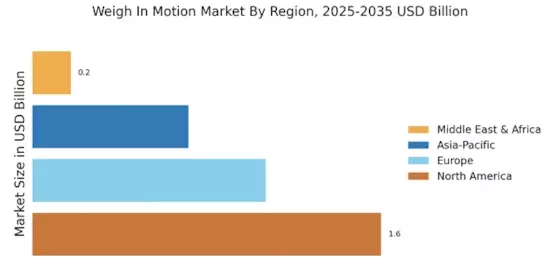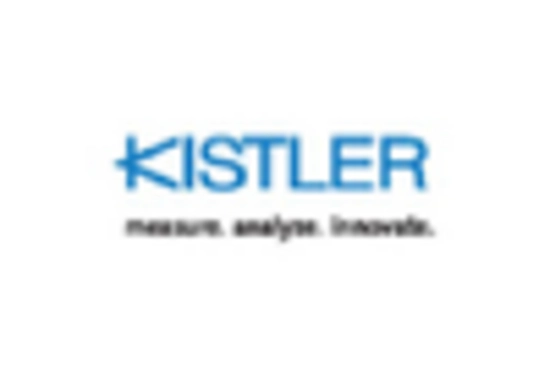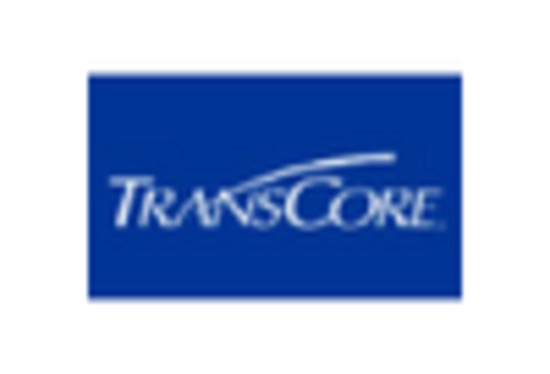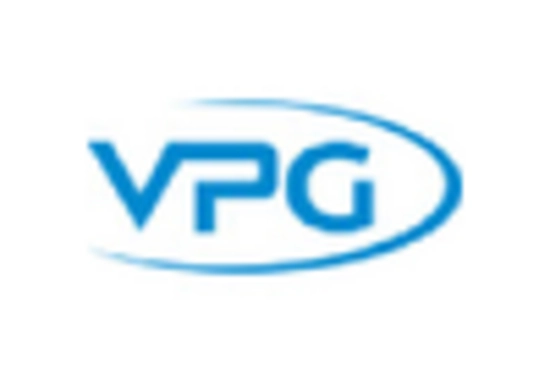The Weigh In Motion Market (WIM) Market is currently characterized by a dynamic competitive landscape, driven by technological advancements and increasing demand for efficient traffic management solutions. Key players such as Kistler (CH), Vishay Precision Group (US), and Siemens (DE) are at the forefront, each adopting distinct strategies to enhance their market positioning. Kistler (CH) focuses on innovation in sensor technology, aiming to improve the accuracy and reliability of weight measurements. Meanwhile, Vishay Precision Group (US) emphasizes partnerships with local governments to expand its footprint in North America, leveraging its expertise in precision measurement. Siemens (DE) is actively pursuing digital transformation initiatives, integrating IoT capabilities into its WIM solutions to provide real-time data analytics, thereby enhancing operational efficiency. Collectively, these strategies contribute to a competitive environment that is increasingly reliant on technological innovation and strategic collaborations.
In terms of business tactics, companies are localizing manufacturing and optimizing supply chains to respond swiftly to market demands. The WIM market appears moderately fragmented, with several players vying for market share. However, the influence of major companies is substantial, as they set industry standards and drive technological advancements. This competitive structure allows for a diverse range of solutions, catering to various customer needs while fostering innovation across the sector.
In August 2025, Kistler (CH) announced the launch of a new line of advanced WIM sensors designed to enhance data accuracy in urban environments. This strategic move is significant as it positions Kistler to capture a growing segment of the market that prioritizes precision in traffic management, particularly in smart city initiatives. The introduction of these sensors is likely to bolster Kistler's competitive edge by addressing the increasing demand for reliable data in urban planning and infrastructure development.
In September 2025, Vishay Precision Group (US) entered into a strategic partnership with a leading technology firm to develop AI-driven analytics for its WIM systems. This collaboration is indicative of a broader trend towards integrating artificial intelligence into traffic management solutions. By leveraging AI, Vishay aims to enhance the predictive capabilities of its systems, thereby providing clients with actionable insights that can optimize traffic flow and reduce congestion.
In October 2025, Siemens (DE) unveiled a new cloud-based platform that integrates its WIM solutions with smart city infrastructure. This platform is designed to facilitate seamless data sharing among various stakeholders, including city planners and transportation agencies. The strategic importance of this initiative lies in its potential to create a unified ecosystem for traffic management, enhancing collaboration and efficiency across urban environments.
As of October 2025, the WIM market is witnessing a shift towards digitalization, sustainability, and AI integration. These trends are reshaping competitive dynamics, as companies increasingly form strategic alliances to enhance their technological capabilities. The focus appears to be shifting from price-based competition to differentiation through innovation and reliability in supply chains. Looking ahead, it seems likely that the competitive landscape will continue to evolve, with companies that prioritize technological advancements and collaborative strategies emerging as leaders in the WIM market.


















Leave a Comment